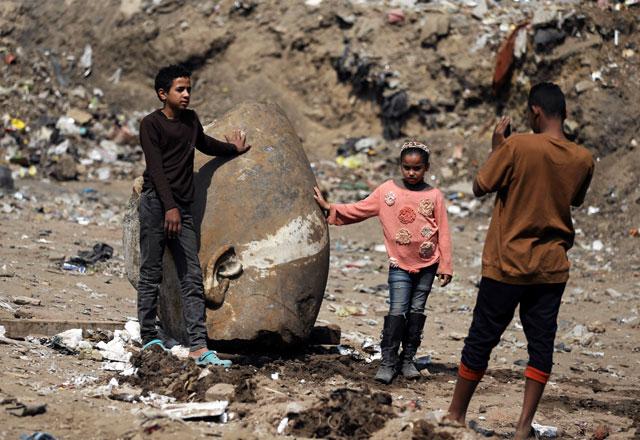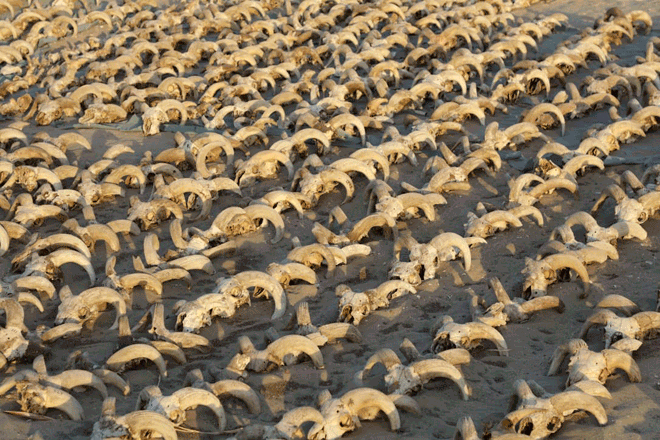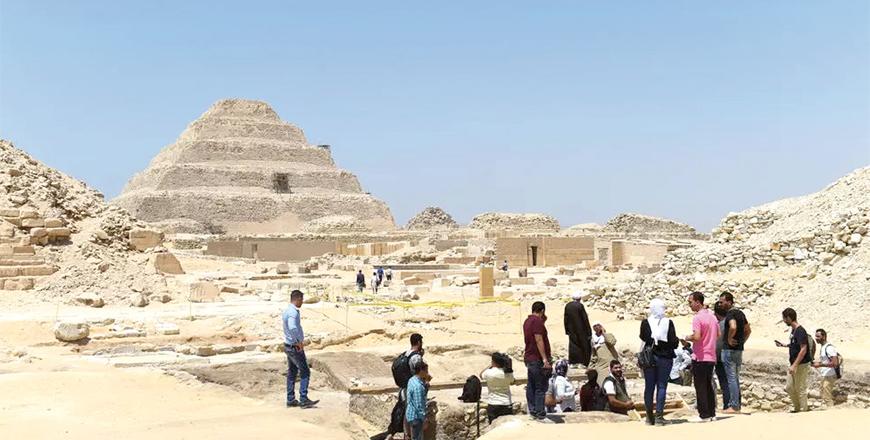You are here
Colossus probably depicting Ramses II found in Egypt
By Reuters - Mar 09,2017 - Last updated at Mar 09,2017

Matariya residents rest against what appears to be the head of an unearthed statue that workers say depicts Pharaoh Ramses II in Cairo, Egypt, on Thursday (Reuters photo)
CAIRO — Archaeologists from Egypt and Germany have found a massive eight-metre statue submerged in ground water in a Cairo slum that they say probably depicts revered Pharaoh Ramses II, who ruled Egypt more than 3,000 years ago.
The discovery, hailed by the antiquities ministry as one of the most important ever, was made near the ruins of Ramses II's temple in the ancient city of Heliopolis, located in the eastern part of modern-day Cairo.
"Last Tuesday they called me to announce the big discovery of a colossus of a king, most probably Ramses II, made out of quartzite," Antiquities Minister Khaled Al Anani told Reuters on Thursday at the site of the statue's unveiling.
The most powerful and celebrated ruler of ancient Egypt, the pharaoh also known as Ramses the Great was the third of the Nineteenth Dynasty of Egypt and ruled from 1279 to 1213 BCE.
He led several military expeditions and expanded the Egyptian Empire to stretch from Syria in the east to Nubia in the south. His successors called him the "Great Ancestor".
"We found the bust of the statue and the lower part of the head and now we removed the head and we found the crown and the right ear and a fragment of the right eye," Anani said.
On Thursday, archaeologists, officials, local residents, and members of the news media looked on as a massive forklift pulled the statue's head out of the water
The joint Egyptian-German expedition also found the upper part of a life-sized limestone statue of Pharaoh Seti II, Ramses II's grandson, that is 80 centimetres long.
The sun temple in Heliopolis was founded by Ramses II, lending weight to the likelihood the statue is of him, archaeologists say.
It was one of the largest temples in Egypt, almost double the size of Luxor's Karnak, but was destroyed in Greco-Roman times. Many of its obelisks were moved to Alexandria or to Europe and stones from the site were looted and used for building as Cairo developed.
Experts will now attempt to extract the remaining pieces of both statues before restoring them. If they are successful and the colossus is proven to depict Ramses II, it will be moved to the entrance of the Grand Egyptian Museum, set to open in 2018.
The discovery was made in the working class area of Matariya, among unfinished buildings and mud roads.
Related Articles
CAIRO — Archaeologists in Egypt have discovered more than 2,000 ancient mummified sheep heads left as offerings in a temple to the pharaoh R
CAIRO — Egypt on Thursday shifted a colossal statue of legendary Pharoah Ramses II into place at the entrance to a new museum in Cairo that
CAIRO — Egypt announced on Saturday the discovery of a new trove of treasures at the Saqqara necropolis south of Cairo, including an ancient














